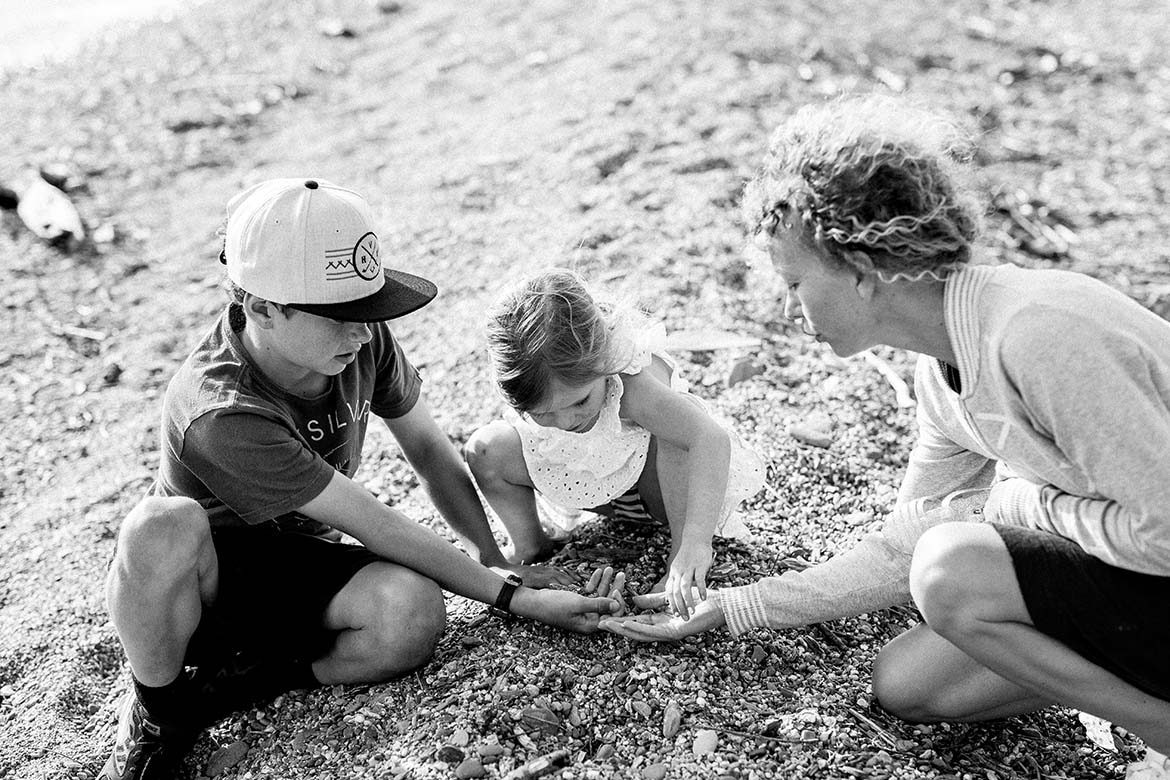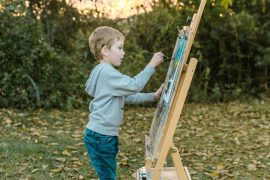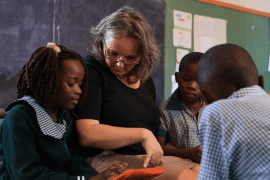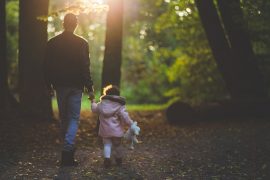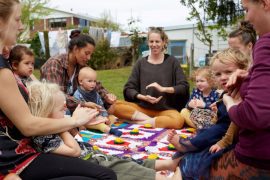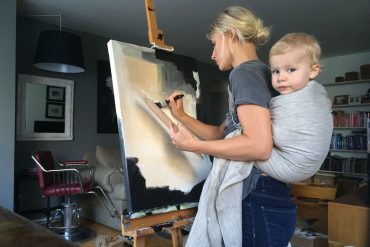By Lisa Hogan
As an educator, I have observed that not all students learn the same way or at the same pace. The most recent question in education is, ‘Why do we continue to teach the class as one whole entity instead of meeting these individual needs?’
There are seven different learning styles documented. As humans, we are made up of a combination of these learning styles – however, we all have a unique combination of these learning styles.
“Perceptual learning styles are the means by which learners extract information from their surroundings through the use of their five senses. Individuals have different “pathways” that are specific to them. When information enters that “pathway” the information is retained in short term memory. Repeated exposure and use promote retention in long term memory. The seven perceptual modes (pathways) included in this theory are print, aural, interactive, visual, haptic, kinesthetic, and olfactory.”
7 Different Learning Styles:
- Print: Refers to seeing printed or written words
- Aural: Refers to listening
- Haptic: Refers to the sense of touch or grasp
- Interactive: Refers to verbalization
- Kinesthetic: Refers to the whole body movement
- Olfactory: Refers to the sense of smell and taste
- Visual: Refers to seeing visual depictions such as pictures and graphs
Although we are a jigsaw of learning styles, it has been noted that the act of using our hands as learning tools assists in the consolidation of our learning needs. Have you ever heard of the saying ‘retrace your steps’ when you have lost something? This phrase encourages one to use a hands-on approach to relocate an item.
As we propel our children to become 21st century learners, we seem to be removing a key part in our teaching techniques…the hands-on aspect of learning. Hands-on learning goes beyond the use of play-dough and crafts and should (and could!) expand to light boxes, sensory bins, exploratory learning, the use of recycled items, cooking and baking, trips, nature walks, inquiry, planned and purposeful outdoor play, etc.
With our need to hurry our children along and introduce them to the latest app that will stimulate this hands-on learning, we need to be providing real tangible items for children to relate to, not just a screen. Technology has its place in regards to hands-on learning and allows our children to experience and see things that they may never, otherwise, get to experience BUT it cannot replace the notion of hands-on learning. It simply compliments it.
How do I incorporate hands-on learning in my classroom/home?
- LISTEN to your children – they will let you know, through play, what they are interested in.
- Provide everyday objects on table tops, in centres, in sensory bins to promote usage and exploration.
- Don’t be afraid to get dirty! Soil, sand, flour, water, salt, powder, food colouring, glitter, rocks are great tools to heighten senses.
- Create purposeful hands-on learning activities that are child directed/led.
- Remember to provide a lead into the activity/material and a consolidation piece to create a meaningful experience.
- Hands-on learning lessons/activities works best in SMALL groups – it allows children to explore more thoroughly which them allows for processing time and deeper questions to take place.
- Make hands-on learning a PRIORITY! It should not be another thing to be added into your day but incorporated into your day.
- Take them outside. Our natural learning environment is our best teacher!
- Have fun and join in. As educators in early childhood, we are so blessed to be able to see the world again through a child’s view – take advantage of this opportunity.
As a mom of a busy bouncing toddler, I see my little one fully engaged in hands-on learning. From feeding to play and everything in between, I have the opportunity to stimulate cognitive development. It has been an honour and privilege to be able to watch her grow and develop, while she learns through her senses.
Take every day as an opportunity to reflect, re-try and rejoice knowing that hands-on learning is a developmentally sound practice that continues to grow in awareness and understanding in our early childhood world and beyond!
Try it with your kids:
Experience your senses through this natural DIY – Homemade Lip balm (Vegan) Recipes!
- 3 parts raw cocoa butter
- 1 part coconut oil
- 3-5 drops of essential oil OR vanilla OR tea
- Small jars or tins
- Mason jar
Directions
Step 1 Place a mason jar (or cleaned out tomato sauce jar) in a shallow water bath on the stove (similar to a double-boiler idea).
Step 2 Place cocoa butter & coconut oil in the mason jar on the stove.
Step 3 Once melted add in essential oils.
Tea Version – add tea (loose tea or open tea bags and place only the loose tea in), continue to boil for 15 minutes.
Step 4 Once combined, melted ( and smells amazing!!!), pour into small jars are tins for individual use! Let cool on the counter or table for about an hour and then transfer to the fridge for an hour!
Tea Version – Strain the liquid using a tea diffuser and then pour into jars. You could also leave the tea in the liquid and create a tea scrub instead of lip balm.

